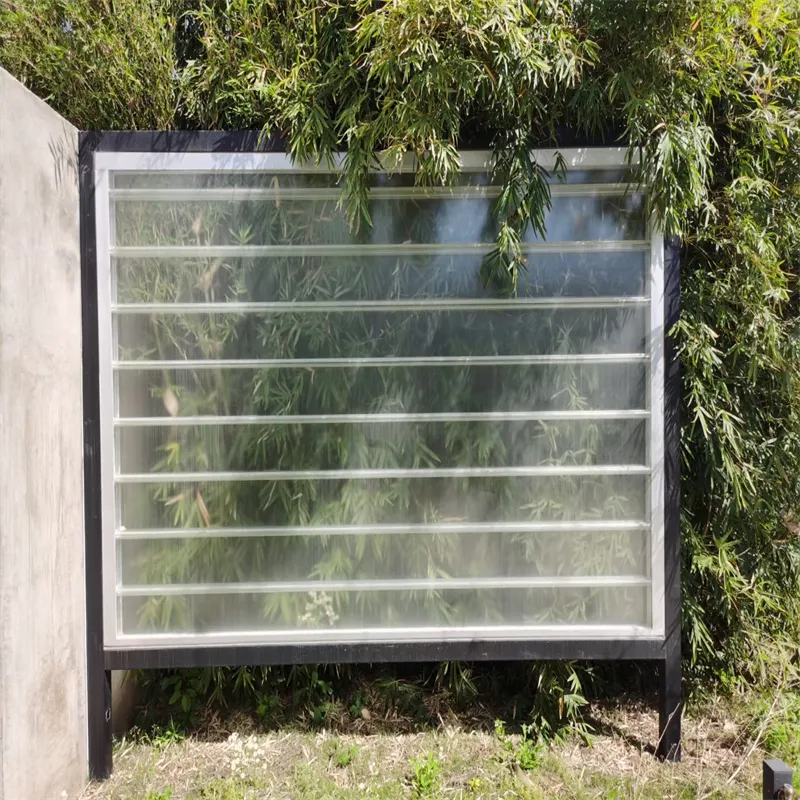11 月 . 04, 2024 10:38 Back to list
Benefits of Low-E Coated Glass for Energy Efficiency and Comfort
The Advantages of Low-E Coated Glass
Low-emissivity (Low-E) coated glass has emerged as a revolutionary material in the building and construction industry, providing effective solutions for energy efficiency and comfort in residential and commercial properties. As the demand for energy-efficient building materials rises, understanding the significant benefits of Low-E glass becomes increasingly important for both builders and homeowners.
What is Low-E Coated Glass?
Low-E glass is a type of glass that has been treated with a thin, transparent coating that reflects infrared light while allowing visible light to pass through. This specialized coating is typically made from metallic oxides that are applied to the glass surface during manufacturing. The result is a product that enhances thermal performance, reducing the need for artificial heating and cooling, thereby contributing to energy conservation.
Energy Efficiency
One of the most significant advantages of Low-E coated glass is its ability to improve energy efficiency. Traditional glass absorbs and transmits heat, leading to higher energy consumption for heating and cooling systems. In contrast, Low-E glass reflects heat back into a building during winter months, keeping interiors warm. Conversely, in summer, the glass minimizes heat gain from the sun, helping to maintain a cooler indoor environment. This dual functionality can lead to a significant reduction in energy costs, often yielding substantial savings on utility bills.
Enhanced Comfort
The use of Low-E glass can significantly enhance indoor comfort levels. By moderating temperature fluctuations, it reduces drafts and cold spots associated with traditional glazing systems. Homeowners will experience a more consistent and comfortable indoor climate without the excessive reliance on heating and cooling systems. Importantly, Low-E glass also minimizes condensation on the interior surface, which can contribute to mold growth and other moisture-related issues.
low e coated glass

UV Protection
Another important benefit of Low-E coated glass is its ability to block ultraviolet (UV) rays. Prolonged exposure to UV radiation can cause fading and deterioration of furniture, flooring, and artwork. Low-E glass can filter out a significant amount of these harmful rays while still allowing natural light to enter. This protective feature preserves the aesthetics and longevity of interior spaces, making Low-E glass an ideal option for sunlit areas such as living rooms and galleries.
Environmental Impact
The environmental benefits of Low-E coated glass extend beyond energy savings. By reducing the reliance on fossil fuels for heating and cooling, Low-E glass contributes to lower greenhouse gas emissions. Additionally, its extended lifespan means that less frequent replacements are needed, reducing waste in landfills. Choosing Low-E glass can be an essential step towards sustainable building practices, aligning with global efforts to combat climate change.
Versatility and Aesthetics
Low-E glass is available in various forms, including single, double, and triple glazing, allowing for flexibility in design and application. Its versatile nature means it can be used in windows, doors, and facades, suiting a range of architectural styles. Furthermore, the clarity and aesthetic quality of Low-E glass do not detract from the visual appeal of buildings; instead, they can enhance natural light and visibility while maintaining energy efficiency.
Conclusion
In a world increasingly focused on sustainability and energy conservation, Low-E coated glass stands out as a remarkable solution for modern construction and renovation projects. Its numerous benefits—energy efficiency, enhanced comfort, UV protection, environmental impact, and aesthetic versatility—make it an invaluable choice for homeowners, architects, and builders alike. As technology continues to evolve, the prominence of Low-E glass will likely grow, solidifying its place as a key player in the future of energy-efficient building materials. As we strive for a balance between comfort, aesthetics, and environmental responsibility, Low-E coated glass is simply a win-win solution.
-
Wired Glass: A Strong and Secure Glass Solution for Various Applications
NewsNov.04,2024
-
Tinted Glass: A Stylish and Functional Choice for Modern Homes
NewsNov.04,2024
-
The Elegance and Versatility of Silver Mirrors
NewsNov.04,2024
-
The Advantages of Copper Free Mirrors
NewsNov.04,2024
-
Tempered Glass: A Reliable Choice for Modern Applications
NewsNov.04,2024
-
Pattern Glass: Stylish and Functional Glass for Modern Design
NewsNov.04,2024
Related PRODUCTS














